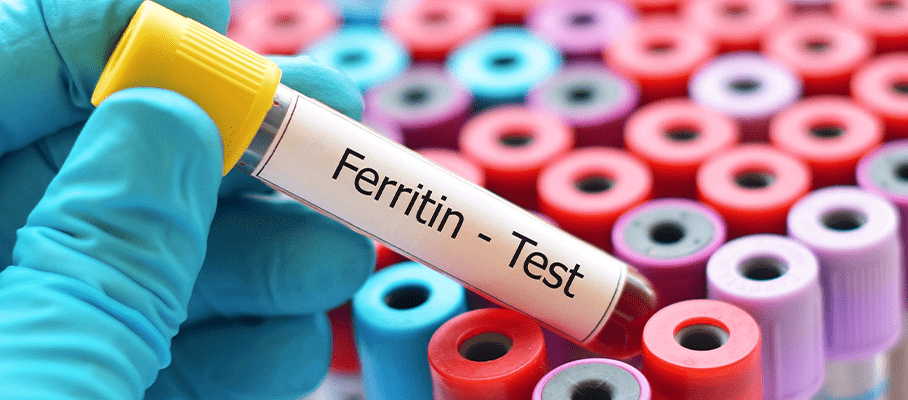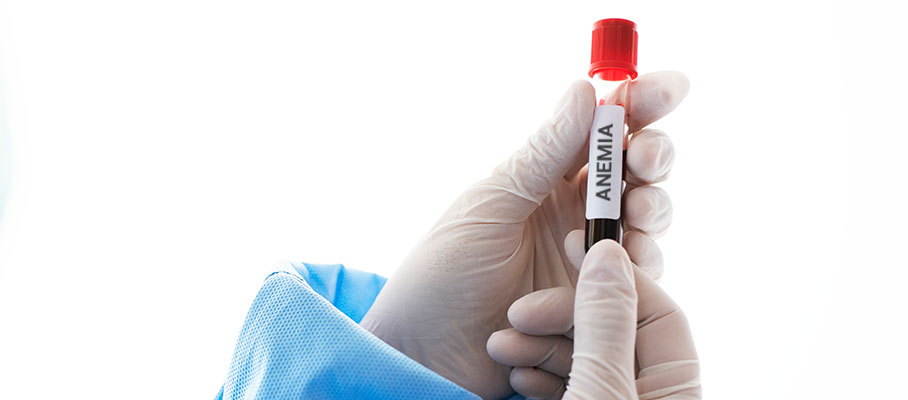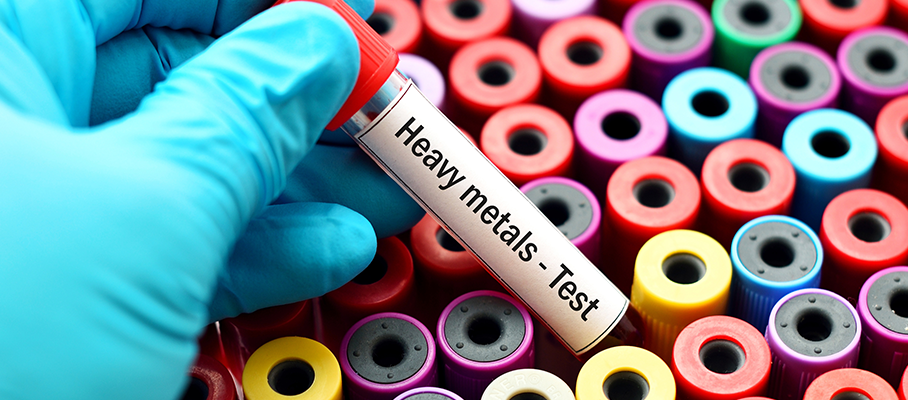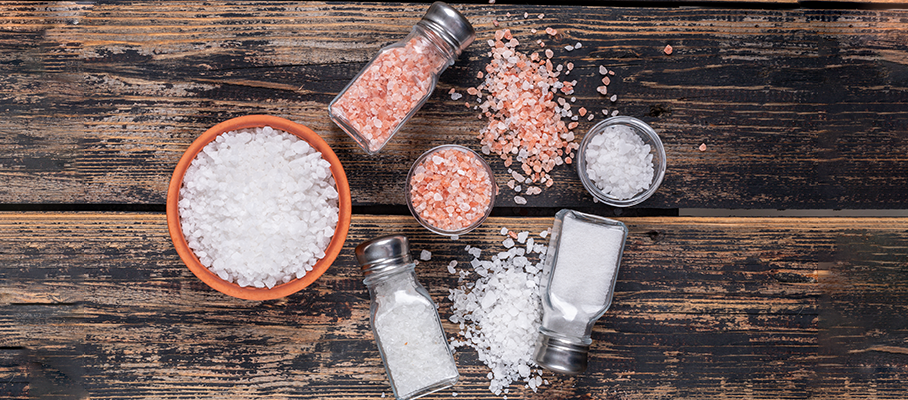Latest Blogs
Vitamins and Minerals you Need For that Voluminous Hair
Luscious, silky and voluminous hair is every person’s desire. As with all other parts of the body that require nutrients to be healthy, the same goes for our hair as well. While there are certain other factors such as age, genes, hormonal effects etc. that can affect hair growth, taking the right vitamins and minerals goes a long way in keeping them healthy, shiny and growing. Here, we take a quick look at the vitamins and minerals your body needs for those strong, shiny and voluminous hair: Vitamins for hair volume Vitamin A: Your hair needs adequate vitamin A aka retinol for growth. It helps the skin glands produce an oily substance called the sebum that moisturizes the scalp, and keeps hair health in check, by also fighting off radicals that make your hair look flat and weighed down. You can include animal products like milk, eggs, cheese, yogurt, oily fish, or vegetables like carrots, spinach etc. in your diet as they are good sources of vitamin A. Vitamin B: Biotin is one of the best known vitamins that contribute to hair growth, deficiency of which can lead to hair loss. This can be found in a lot of foods, such as whole grains, leafy vegetables, fish, eggs, nuts etc. These help regulate the metabolism and are also useful in maintaining a healthy nervous system. There are other vitamins B which help create red blood cells that are responsible for carrying oxygen and nutrients to the scalp, thereby promoting healthy hair growth. Vitamin E: Vitamin E is an antioxidant. According to a small study, people with hair loss experienced about 34.5% increase in hair growth when their intake of vitamin E was regulated for 8 months. Foods such as spinach, almonds, plant oils such as rapeseed (vegetable oil), sunflower, soya, corn and olive oil and avocados are good sources of vitamin E, and should be eaten regularly to maintain the right amount of nutrients in the body. Tablets and other supplements are also available in the market for vitamin E, but opting for natural ways is a better remedy to prevent hair loss, as these can have adverse effects or can also lead to hair loss. Vitamin C: Collagen protein forms an important part of your hair and this vitamin helps form it. Free radicals can sometimes damage and block hair growth or make your hair look dull and aged, vitamin C comes as a powerful antioxidant that helps prevent the oxidative stress that these free radicals cause, and ensure the hair is growing, strong and healthy. Fruits like guavas, oranges, lemons, strawberries as well as peppers, broccoli, brussels sprouts and potatoes etc. are all great sources of vitamin C. Minerals for hair volume: Iron: A condition called telogen effluvium where there is an excessive amount of hair loss experienced may be related to deficiency in iron. It is essential to make sure they take a diet rich in iron, and have adequate amounts of ferritin i.e. iron storage in the body maintained. Have leafy vegetables, beans such as red kidney beans and chickpeas, seafood etc., to make sure iron levels are sufficient to prevent hair fall and support luscious locks. Zinc: The dryness in the hair can also be attributed to lack of zinc in your diet. Without zinc, a hormonal imbalance can happen and result in the hair follicles to shrink. It is not only involved in testosterone metabolism but also helps in regulating oil production in the sebaceous glands in the scalp. Food like meat, legumes, nuts, baked beans, chickpeas, dark chocolate etc. can help with fulfilling zinc requirements. Iodine: We are always cautioned about taking the right amount of salt in our food; iodine is an important mineral that is required to make thyroid hormones. Any changes in the hormone can lead to the hair getting thin, losing their shine and ultimately having hair loss due to change in hair quality. Selenium: It is another antioxidant that clears toxins that can have an adverse effect on the hair growth and inhibit hair growth. The mineral is involved in hair formation and is needed by the body for regulating and activating thyroid hormones, imbalances in which can lead to hair fall. All these hormones and nutrients are in one way or the other related to each other and are responsible for giving our hair a healthy shine. Liver, fish, eggs, whole grains, meat, fish and nuts etc. can be consumed for selenium. The blood and other body fluids have minerals that carry an electric charge. These are called electrolytes and perform many important functions in the body. Book electrolytes tests here. If one is suffering from constant hair fall or hair loss, seeking a dermatological treatment is your best bet; it could be due to some disease, vitamin deficiency, any hormone imbalance, severe infection etc. Your doctor would suggest going for a blood test or scalp biopsy. Depending on the cause, the doctor can recommend either at-home treatments, such as using minoxidil, laser caps or combs, or can recommend injections, hair transplant, PRP (platelet rich plasma) or laser therapy that truly depends on the degree of hair fall intensity. Many people do not have enough of these vital nutrients in their daily diets, leading to deficiencies or having to take supplements for what can be available naturally. Ultimately, healthy eating, exercising, living a stress free life can go a long way in helping curtail deficiencies of essential nutrients in the body that in turn reflect on your hair, resulting in their shine, volume and making them strong, promoting growth and reducing hair fall.
Telltale Signs of Anemia. Could You Be Anemic Too?
Anemia is a medical condition that barely needs an introduction. This lack of enough red blood cells or hemoglobin is so common that each one of you must have heard about the term in your vicinity.As per studies, about one-third or nearly 30% of the world's population is affected with anemia due to varied causes. The fearful stats are that the prevalence of anemia is even high than this (approximately 51%) as compared to the global prevalence. How much is enough? In general, the normal levels of hemoglobin in men and women is: Men: 13.8 to 17.2 grams per deciliter (g/dL) Women: 12.1 to 15.1 g/dL or 121 to 151 g/L Anything below these Hb levels is considered to be anemia. It is caused primarily through three basic pathways: A decline in the production of red blood cells or hemoglobin A rise in loss or destruction of red blood cells. Increased demand for iron in the body (for instance, during pregnancy or illness). Looking at a complete blood count (CBC) test report, your doctor can get clues as to what could be the cause of anemia in your case. Book test now. Symptoms of Anemia Anemia can be of many different types. Your symptoms may vary according to the type of anemia, the underlying cause, the severity, etc. While the various types of anemia may have certain specific symptoms, some common problems may be noticed first. Symptoms common to many types of Anemia include the following: Feeling tired all the time and loss of energy Shortness of breath and headache, especially with exercise Difficulty concentrating and focus Dizziness Pale skin Crams in legs Sleeplessness Remember, your body also has a phenomenal capacity to compensate for early anemia. You may have mild anemia or one that developed over a long period of time, and not notice anysymptoms. Specific symptoms of anemia Anemia Caused by Iron Deficiency (Iron deficiency anemia) A hunger for strange substances such as paper, ice, or dirt Upward curvature of the nails, called koilonychia Soreness of the mouth with cracks at the corners (angular cheilitis) Anemia Caused by Vitamin B12 Deficiency A tingling, or pin and needle sensation in the hands or feet Loss in the sense of touch Difficulty walking (or wobbly gait) Stiffness of the arms and legs Memory loss Anemia Caused by Chronic destruction or loss of Red Blood Cells Jaundice (yellow skin and eyes) Brown or red urine Leg ulcers Symptoms of gallstones Sickel cell Anemia This is a condition that leads to red blood cells become rigid and sickle-like shaped. When red blood cells sickle, they break down prematurely. This can cause anemia. Fatigue Higher chances of infection Delayed growth and development in children Episodes of severe pain, especially in the joints, abdomen, and limbs Anemia Caused by Sudden Red Blood Cell Destruction Pain in abdomen Jaundice Small bruises under the skin Seizures Symptoms of kidney failure How is Anemia diagnosed? Your doctor is likely to ask you about your medical and family history, and order the following tests: Complete blood count (CBC): This test is used to count the number of red blood cells in your blood. Your doctor will check the hematocrit and the hemoglobin in your blood. In general, adult hematocrit values vary between 40% and 50% for men and 35% and 43% for women. For people who engage in intense physical activity, are pregnant or elderly, the numbers may normally be lower. Smoking and being at high altitudes might elevate numbers. Additional diagnostic tests A few tests may be ordered to evaluate different parameters like the levels of serum ferritin, iron, total iron-binding capacity, and/or transferrin may be ordered in for diagnosing an iron deficiency anemia. Additional tests for anemia include: Mean cellular volume (MCV, included in CBC) Serum ferritin levels Iron studies test (low iron saturation) Transferrin or total iron-binding capacity (TIBC) Could you be at risk of getting Anemia? While there are multiple types of anemia, iron deficiency anemia is the most common form, especially among women and people who have a diet that lacks enough iron.The following groups of people have the highest chances for iron-deficiency anemia: Menstruating women, especially if menstrual periods are heavy Pregnant or lactating women People with gut-related conditions such as celiac disease, inflammatory bowel diseases such as ulcerative colitis, or Crohn’s disease People with gastric ulcers or peptic ulcer disease People who have undergone bariatric procedures, especially gastric bypass operations Vegetarians, vegans, and other people whose diets do not include iron-rich foods People who have undergone major surgery or physical trauma As per some literature, children who drink more than 16 to 24 ounces a day of cow's milk can also develop iron deficiency. Cow's milk contains little iron, and may also decrease iron absorption and cause irritation to the intestinal lining. However, always consult your child’s doctor as to what might suit him and what should be avoided. Make sure to eat an iron-rich and healthy diet including green leafy vegetables and fruits. Also, if you are experiencing chronic fatigue, do get a comprehensive test done and speak to a doctor.
Could you have iron deficiency anemia? Find out here
Iron is an essential nutrient that performs several vital functions in your body. Most importantly, it helps form hemoglobin, the protein in the red blood cells (RBCs), and facilitates oxygen transport in your blood from the lungs to body organs. It is also an integral part of many important enzyme systems. Enzymes are biological catalysts that modulate different metabolic activities in your body. A lack of sufficient iron levels can cause anemia, and iron deficiency anemia (IDA) is by far the most common cause of anemia.[1] As stated by the World Health Organization (WHO), two billion people are affected by anemia in the world and half of these anemic cases are due to iron deficiency. Could you have iron deficiency anemia? The symptoms of iron deficiency anemia can be so subtle at first that you may not even notice them. The American Society of Hematology (ASH) says, most people do not even realize they could have mild anemia until they get routine blood work done. You may experience some or all of the below-mentioned symptoms if you have moderate to severe iron deficiency: Tiredness and fatigue Weakness Pale skin A tingling or crawling feeling in the legs Cold hands and feet Fast or irregular heartbeat Brittle nails Headaches Shortness of breath Dizziness Weird cravings to eat ice or clay Not just these, iron deficiency anemia increases the risk for preterm labor, low birth weight, and even infant mortality, and thus poses significant consequences for future generations.[3] Deficiency of iron also leads to decreased intellectual performance among school children. If you are experiencing any of the above-mentioned symptoms and doubt that you may not be taking enough iron in your diet, do get your iron levels checked through a lab test and consult a doctor to get medical advice. Pregnant women should be especially cautious about having sufficient iron levels in their blood. What can cause an iron deficiency anemia? Inadequate iron intake: Unlike some vital substances, your body cannot produce iron and thus it must be absorbed from the foods you eat or from iron supplements. If youare not eating enough iron over an extended amount of time, you can get deficient in iron. Inability to absorb iron: Evenif you take sufficient iron in your diet, your body might not be able to absorb and utilize iron.Certain disorders or surgeries like celiac disease, gastric bypass can impair iron absorption in your body. Pregnancy or blood loss due to heavy periods: Blood loss during delivery or heavy menstruation are the most common causes of iron deficiency anemia in women. Certain medical conditions that cause internal bleeding: Gastric ulcers, polyps in the colon or intestines, cancer of the colon, or injudicious use of some pain relievers can lead to internal bleeding and loss of iron from the body. Who is at risk of getting iron deficiency anemia? While anemia can affect men and women of any age, some people may run a greater risk of iron deficiency anemia than others, such as: Pregnant women People with poor unhealthy diets Women of childbearing age Vegetarians who fail to take enough iron-rich food Think you could be at risk of iron deficiency anemia, be sure to talk to your doctor and discuss if blood testing or dietary changes can benefit you. Which health tests can help diagnose iron deficiency anemia? Complete blood count (CBC) test A CBC is a routine blood work that measures the amount of all blood components including red blood cells (RBCs), hemoglobin, hematocrit, white blood cells (WBCs), platelets, etc. This simple blood test can provide insights into the iron levels in your blood and help diagnose iron deficiency anemia. Your hematocrit and hemoglobin levels tend to be low if your iron levels are low. Your RBCs are usually smaller in size than normal. Other tests A CBC test is usually confirmatory to know about anemia. However, your doctor might recommend certain additional iron studies tests to know about the cause and severity of your anemia. These blood tests will provide information around some specific parameters (such as ferritin, iron binding capacity) and help determine better treatment options. You may also be advised of a fecal occult test or endoscopy to look for any internal bleeding. While lack of iron can adversely affect many of your vital functions, excess iron can also be toxic to the body. So ensure to consume a recommended amount of iron only.
Electrolytes disorders: Symptoms, Risk factors, Diagnosis, Prevention, and Treatment
What are electrolyte disorders? We will come to that, but first, do you know what electrolytes are? These are minerals that occur naturally in your body and help your body perform multiple day-to-day functions. Electrolytes not only help balance the water levels in your body but also regulate the acid-base balance, help nutrients move in and waste move out of the body cells, and pass signals across nerve and muscle cells. Examples of electrolytes include sodium, calcium, magnesium, potassium, and chloride. These minerals are present in your blood, urine and body fluids. When the level of any of these physiologic compounds gets either too high or too low, the imbalance is termed as an electrolyte disorder. To prevent your vital body functions from getting affected by electrolyte disorders, it is important to identify the warning signs, get them diagnosed early, and receive treatment on time. How do you tell if you have electrolyte disorders? Depending on the severity of the electrolyte disorder, symptoms might vary from person to person. In fact, the milder forms may not cause any symptoms. Thus, it is very common for electrolyte disorders to go unnoticed. The best way to know if you could have electrolyte imbalance is to get a health test done that checks electrolyte levels. This test will provide a detailed break up of all the electrolytes and let your doctor see if there is any disruption in the electrolytes levels. Also, different electrolyte disorders can share many symptoms in common. Some of the common symptoms of electrolyte disorders include: Fatigue and lethargy Nausea and vomiting Diarrhea or constipation Cramps in abdomen Muscle weakness and cramps Irritability Headaches Irregular heartbeat Fast heart rate Numbness and tingling sensation in hands and feet Severe electrolyte imbalances can cause serious concerns like coma, seizures, and cardiac arrest. It is thus advisable to not let your electrolyte disturbances be left untreated. If you are experiencing any of these symptoms too often without any other known medical concern, get tested for electrolytes and consult a doctor. What can give you electrolyte disorders? The most common causes of electrolyte disorders include loss of body fluids due to prolonged vomiting, diarrhea, or sweating. Burns causing fluid loss can also lead to electrolyte disturbances. In some people, certain underlying health conditions like chronic kidney disease or some medicines can cause electrolyte disorders. However, the exact cause may differ based on the type of electrolyte imbalance. Could you be at risk? While anyone can get an electrolyte disorder, the risk may be increased in some people due to their medical history. Health conditions that put a person at risk of developing electrolyte disorder include: Alcohol use disorder Congestive heart failure Chronic kidney disease Cirrhosis Eating disorders, such as anorexia and bulimia Thyroid disorders Disorders related to the adrenal gland. Can electrolyte disorders be of different types? Yes, depending on the electrolyte whose levels are disturbed and whether the levels have elevated or depleted, electrolyte disorders can be of many different types. For example, if calcium levels have gone down, it is called hypocalcemia; if they have gone up, it is termed hypercalcemia. Similarly, if sodium levels dip down, it is called hyponatremia; if sodium levels rise, it is termed hypernatremia. How are electrolyte disorders treated? Treatment options are usually aimed at restoring the balance of minerals in the body. Also, it will vary based on the type of electrolyte disorder and the underlying cause. Some of the treatment options include: Intravenous (IV) fluids such as sodium chloride: These are commonly used in cases of dehydration resulting from vomiting or diarrhea. Certain IV medicines depending on the electrolyte imbalance you have: For example, calcium gluconate, potassium chloride, and magnesium chloride. These can help restore electrolyte balance quickly. Oral medications and supplements: These are commonly used if a person has been affected with ongoing kidney disease. Hemodialysis: Hemodialysis is a procedure that uses a machine to remove waste from your blood. It is used when an electrolyte disorder is caused by sudden kidney damage and other treatment options do not seem to help. What can you do to prevent electrolyte disorders? Keep yourself hydrated and eat a balanced diet. Minor forms of electrolyte imbalance can be corrected via replenishing the body’s stores via eating mineral-rich food items. For example, including bananas, oranges, mushrooms, sweet potatoes, etc in your diet can help your body fend off potassium deficiency. If you are working out for more than 30 minutes, sip a sports drink containing electrolytes. Avoid drinking too much water along with it, as it might dilute the minerals and decrease the health benefits. If you experience any warning sign of an electrolyte disturbance, get your electrolyte levels checked, do consult a doctor, and seek medical advice.
All that you need to know about Anaemia
Do you feel fatigued and energy draining out of you all the time. Does your child have difficulty concentrating? Or does she feel dizzy? Do you have leg cramps? Can’t fall asleep even if you are tired? These are not symptoms of exhaustion or a long day at work/school but indicate a probable cause of Anaemia! Did you know that Anaemia is the most common condition that affects Indian women? Research done by Metropolis Healthcare indicates that 1 in 2 women in India are anaemic and that puts a large number of us under risk. Also you would be surprised to know that there are over 400 different types of Anaemia. So adding a lot of spinach to your daily food may not help at all. While the most common reason for Anaemia is Iron Deficinecy, there are many other types of Anaemia and it is important to find out the exact cause. Symptoms of anemia will vary depending on the type and cause, but include: Fatigue and loss of energy Unusually rapid heartbeat, particularly with exercise Shortness of breath and headache, particularly with exercise Difficulty concentrating Dizziness Pale skin Leg cramps Insomnia Now let’s look at different types of Anaemia and Symptoms pertaining to each one of them Type of AnaemiaSymptomsManagementAnaemia caused by iron deficiency: Craving for paper, ice, or dirt/mud/chalk (a condition called pica) Soreness of the mouth with cracks at the corners A smooth or sore tongueWith iron deficiency anaemia your doctor may recommend iron supplements that contain the ferrous form of iron, which your body can absorb easily. Always consult with your doctor before taking iron supplements. Excess iron intake can be harmful.Anaemia caused by vitamin B12 deficiency: A tingling, “pins and needles” sensation in the hands or feet. Loss of sense of touch. An unsteady, wobbly gait and difficulty walking For vitamin B12 and folate deficiency anaemia, the treatment depends on the cause of the deficiency. If your body stores are depleted of vitamin B12, your doctor is most likely to prescribe vitamin B12 injectionsAnaemia caused by chronic lead poisoning: Blue-black line on the gums referred to as a lead lineAbdominal pain, Constipation, Vomiting, Seizures in severe cases, especially in childrenLead poisoning is treated by discontinuing exposure to lead and administering a medicine that binds and draws lead out of the body.Anaemia caused by red blood cell destructionJaundice (yellow skin and eyes)Brown or red urine, Leg ulcersFailure to thrive in infancySymptoms of gallstones, Seizures, Abdominal painThe treatment of haemolytic anaemia may be tailored to the underlying cause. It is important to consider altering or stopping any medication or agent that is causing the condition.Sickle cell anaemia: Fatigue, Susceptibility to infectionDelayed growth and development in children, Episodes of severe pain, especially in the joints, abdomen and limbsDoctors usually begin treatment that includes stimulation of a different type of hemoglobin which reduces the severity of the conditions So lets look at some of most common tests used to screen for anaemia and diagnose the root cause: Complete Blood Count Often, the first test used to diagnose anemia is a complete blood count (CBC). The CBC measures many parts of your blood.The test checks your hemoglobin and hematocrit levels. Hematocrit is a measure of how much space red blood cells take up in your blood. A low level of haemoglobin indicates anaemia. The CBC also gives information on mean corpuscular volum abbreviated as MCV. MCV is a measure of the average size of your red blood cells and a clue as to the cause of your anemia. In iron-deficiency anemia, for example, red blood cells usually are smaller than normal. Other Tests and Procedures If the CBC results show that you have anemia, you may need other tests, such as: Hemoglobin electrophoresis: This test looks at the different types of hemoglobin in your blood. The test can help diagnose the type of anemia you have. A reticulocyte count: This test measures the number of young red blood cells in your blood. The test shows whether your bone marrow is making red blood cells at the correct rate. Tests for the level of iron in your blood and body: These tests include serum iron and serum ferritin tests. Transferrin level and total iron-binding capacity tests also measure iron levels. To find out the exact cause of Anaemia, your doctor may recommend tests for conditions such as as kidney failure, lead poisoning (in children), and vitamin deficiencies (lack of vitamins, such as B12 and folic acid). In case a case of internal bleeding is suspected, then a stool test for blood is performed may be along with an endoscopy. In rare cases, bone marrow tests are also performed to check if bone marrow is making healthy and enough blood cells.
Lead Poisoning Symptoms: Know Lead Poisoning Side Effects - Metropolis Study
Mumbai June 2015:Lead poisoning remains one of the most important environmental health concerns globally. It is a cumulative toxicant that affects multiple body systems and is particularly harmful to young children. An analysis of 733 blood samples collected over the past one year by Metropolis Healthcare Ltd reveals that 23.47% of the total samples tested positive with Lead poisoning. At Metropolis, Lead Poisoning is tested using high sensitivity technology called ICPMS (Inductively Coupled Plasma Mass Spectrometry) and Graphite Furnace Atomic absorption spectrometry. Blood, Serum and Urine samples can be tested for Lead. According to a WHO study, lead exposure is estimated to account for 1,43,000 deaths per year with the highest burden in developing regions. Young children are particularly vulnerable to the toxic effects of lead and can suffer profound and permanent adverse health effects, particularly affecting the development of the brain and nervous system. Lead exposure is estimated to contribute to 6,00,000 new cases of children with intellectual disabilities every year. In growing children, lead poisoning causes low IQ, hyperactivity, attention deficit, learning disabilities and anemia. Lead-based paint and lead-contaminated dust in older buildings are the most common sources of lead poisoning in children. Other sources include contaminated air, water and soil. Lead also causes long-term harm in adults, including increased risk of high blood pressure and kidney damage. Adults who work with batteries, do home renovations or work in auto repair shops also may be exposed to lead. It can induce brain, kidney, stomach, heart, hearing, muscle and fertility damage. Exposure of pregnant women to high levels of lead can cause miscarriage, stillbirth, premature birth and low birth weight, as well as minor malformations. Women with high blood lead levels develop early osteoporosis, lower backache, joint pain and persistent anemia. Lead Profile (Reference range : Normal – 0 – 9 μg/dL , Positive – Above 9 μg/dL) *Children under the age of 6 are especially vulnerable to lead poisoning, which can severely affect mental and physical development. While the American Center for Disease Control and Prevention suggests that a value below 9 ug/dl is safe in children and adults, the healthcare practitioner takes disease management decision based on the symptoms in the patient. Please note: The data represents patient sample testing in clinically suspected individuals and hence the % of positivity seen cannot be extrapolated to general population. However, possibility of lead toxicity exists across all age groups & should be considered in appropriate clinical settings. Commenting on the study Dr.SandeepWarghade, Consulting Pathologist Metropolis HealthcareLtd said, “Lead poisoning can be hard to detect even people who seem healthy can have high blood levels of lead. At high levels of exposure, lead damages the brain and central nervous system and can lead to coma, convulsions and even death, signs and symptoms of lead poisoning usually don’t appear until dangerous amounts have accumulated. Lead poisoning can be treated if detected at an early stage; taking some simple precautions can help protect yourself and your family”. Major sources of blood lead include leaded contaminated soil, drinking water, petrol emissions, household dust, battery recycling, silver refining, paints (especially yellow), pigments, printing presses, ceramic pottery glazes, cosmetics, colours (including kumkum, sindoor, spices and Holi colours), children’s toys (crayons and painted pencils), plant foods and traditional medicines. Lead poisoning cases in young children are high because of licking or eating lead-containing paint when it is peeling off the walls or toys. Lead from a mother’s blood can pass to the fetus during pregnancy, possibly giving rise to genetic disorders.
Role of Sodium in the Human Body
Sodium is often looked at as the main culprit that causes high blood pressure. But did you know that the body needs sodium in small amounts to play important roles in the body. Sodium along with potassium helps in maintaining the right balance of fluids in the body. It removes excess fluid and retains the required amounts Helps transmit never impulses Regulates the contraction and relaxation of muscles As vague as it may sound, sodium helps in controlling the blood pressure. However consuming excess of sodium can raise blood pressure.
 Home Visit
Home Visit Upload
Upload




















 WhatsApp
WhatsApp